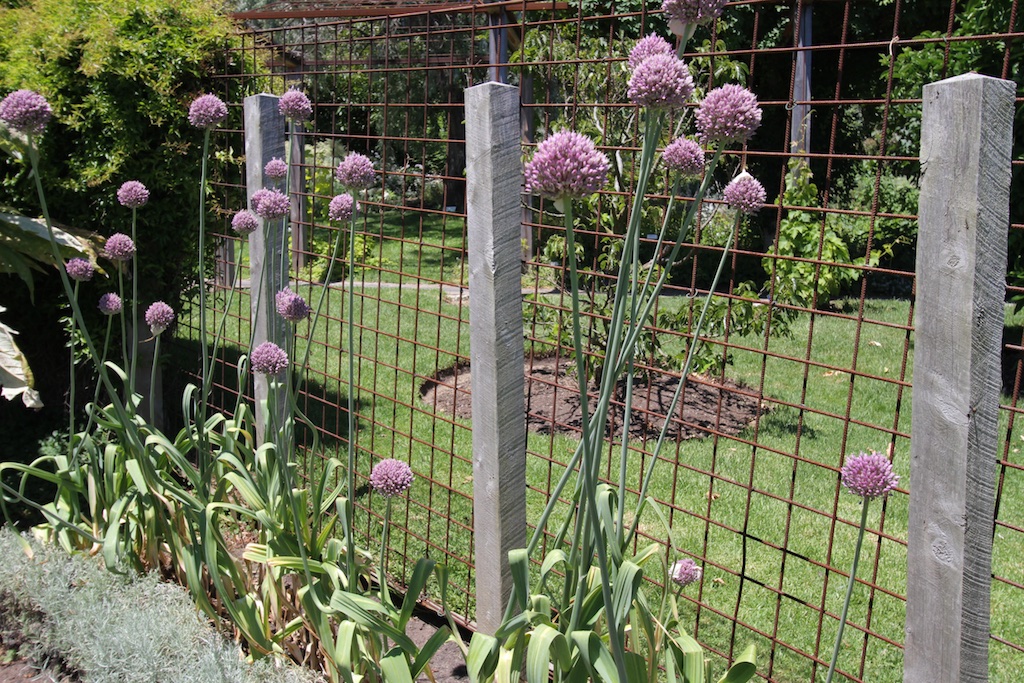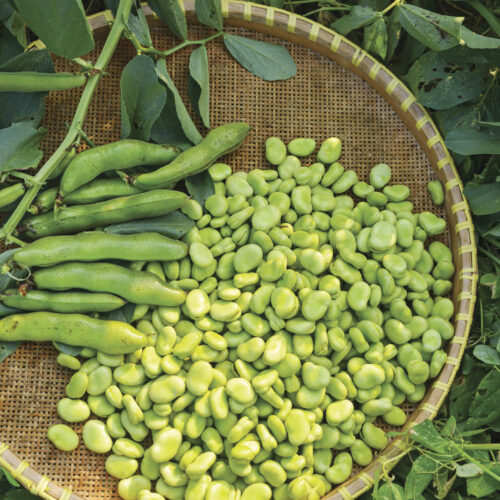The elephant of garlics
2018-09-17T00:33:37+10:00
It's much too late to plant garlic, explains Penny Woodward, but the perfect time for Elephant garlic.
It’s much too late to plant true garlic, Allium sativum; in fact the harvest has started in Northern States. But elephant garlic can be planted now. Elephant garlic bulbs and cloves are mildly, sweet with a flavour somewhere between garlic and leeks. Cloves and rounds are large and easy to peel and are eaten raw, sliced into salads or, steamed or boiled as a vegetable with or without a sauce. They are also cooked like onions in soups, stews or casseroles, or baked in the oven with roasts. It’s a useful and easy to grow plant, but it’s not garlic. Where a true, pungent garlic flavour is needed only true garlic (A. sativum) should be used.
Superficially, elephant garlic looks like a giant form of garlic, hence the name. The leaves are large, blue-green and linear with a central dividing rib. In early or mid-summer, from the centre of the leaves, a solid, cylindrical flower stalk grows to a height of about 2m. Flower heads, only slightly smaller than soccer balls, form singly at the top of the flower stalks in spring and summer. These flower heads are covered by a single long-beaked spathe, which resembles a swan’s head and splits to reveal the densely packed pink or mauve flowers. These flowers are beneficial and both the flower buds and heads look dramatic at the back of a mixed border.
Elephant garlic is also commonly called Russian garlic. In some regions it’s found naturalised on old house sites and it is a welcome, or sometimes, unwelcome inhabitant of many suburban gardens. So what is it? Its botanical name is A. ampeloprasum (Ampeloprasum Group) ‘Elephant Garlic’ and it is actually a close relative of the leek, A. ampeloprasum (Leek Group). It is only more distantly related to true garlic (A. sativum).
Grow elephant garlic from cloves or rounds planted in autumn, winter and spring in mild climates, or autumn and spring in cool climates. Plant the cloves and rounds blunt or root ends down about 30 centimetres apart. The tops of the bulbs should be about 5 centimetres below the soil surface. Plants do best in a rich, deeply cultivated bed and like full sun and well-drained soil, but they are very hardy and really need no special treatment. Regular harvesting and/or confinement to a definite bed ensure that elephant garlic will not become a weed. It grows from the tropics to temperate Australia and tends to grow taller and to have a stronger flavour in cooler regions. ?
Elephant garlic bulbs form under the soil, can reach 10-15 centimetres in diameter and consist of 3 to 6 large cloves. External to these cloves are anything from one to twenty small bulblets, up to one centimetre across, with a flat side. Plants that do not flower often form a single, large, symmetrical clove, also known as a round, up to 4 centimetres in diameter, rather than a bulb. Plants grown from rounds or from very large cloves frequently produce a large bulb with several cloves and a flower stalk. Plants grown from a smaller clove or from a bulblet usually produce a round and no flower stalk. So elephant garlic tends to alternate between the production of cloves and the production of rounds, and to go to seed only every second year. A well-established clump will usually have a mixture of bulbs with cloves and rounds, so there will always be some flower heads.
?Bulbs are harvested when the flowers begin to dry out. Dig the whole plant and hang the bulbs to dry with part of the stem attached, in a shady but dry position. Flower heads with stalks are hung in bunches in a similar position.
Elephant garlic bulbs are high in vitamins A, C and E and are a healthy addition to any diet. Slice young leaves and add to salads or use as a garnish. Feed bulbs and leaves to stock or add them to mash for chickens. Individual flowers can also be eaten, added to salads or used as a garnish. Also immature flower stems (scapes) with the flowers in bud, are harvested and eaten as a gourmet treat.
Flowers, fresh or dried, make an interesting addition to flower arrangements because of their striking appearance. Elephant garlic can also be planted at the back of rose borders or near climbing roses to help keep aphids and other pests at bay.
This plant has much to recommend it. It’s tough and easy to grow; it looks dramatic and has a multitude of uses in the kitchen. Elephant garlic may not be garlic but it’s a terrific plant.






